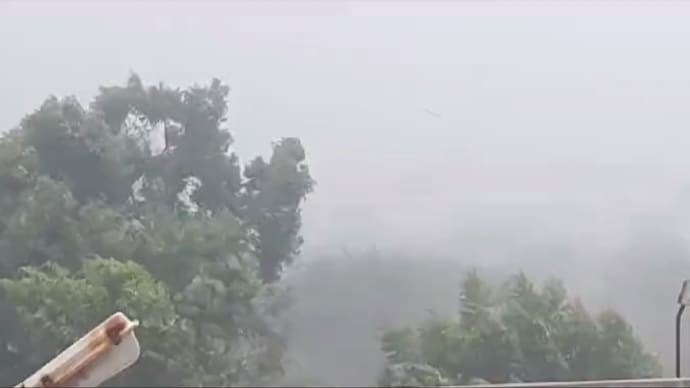Description

Disclaimer: Copyright infringement not intended.
Context
- Unseasonal heavy rainfall accompanied by thunderstorms, hailstorms, and lightning strikes recently occurred in Gujarat, leading to the unfortunate loss of lives.
- The India Meteorological Department (IMD) identified multiple weather systems contributing to this unexpected weather event.
Details
Geographic Location
- Gujarat: Located on the western coast of India, Gujarat shares its northern border with the state of Rajasthan, eastern border with Madhya Pradesh, southern border with Maharashtra, and western border with the Arabian Sea. The state encompasses diverse geographical features ranging from plains, plateaus, to coastline.
Weather Systems' Influence
- Cyclonic Circulation:
- Northeast Arabian Sea, Saurashtra, and Kutch: The cyclonic circulation over these regions significantly impacted the weather conditions in Gujarat, leading to unexpected rainfall and thunderstorms.
- Western Disturbances:
- Mediterranean Sea and Northwestern India: Western Disturbances originating from the Mediterranean Sea region travel across northwestern India, including Gujarat. These disturbances bring winter rainfall and weather changes to the region.
- Easterly Trough:
- Equatorial Region, Arabian Sea: An Easterly trough, characterized by eastward-flowing winds near the equatorial region and the Arabian Sea, contributed to the atmospheric changes affecting Gujarat's weather patterns.

Regional Impact
- Topography: Gujarat's topography varies from arid and semi-arid regions in the northwestern parts of Kutch and Saurashtra to fertile plains in the central and southern regions. The state also hosts the Gir Forest National Park, the only natural habitat of Asiatic lions.
- Coastline: The state boasts a long coastline along the Arabian Sea, impacting its climate with influences from the sea, leading to specific weather patterns and occasional cyclonic activities during the monsoon season.
Atmospheric Conditions
- Moisture Interaction: The convergence of moisture-laden air masses from the Arabian Sea and adjoining regions, influenced by multiple weather systems, contributed to the sudden increase in moisture levels in the atmosphere, intensifying rainfall and thunderstorm activities.
Disaster Management and Geographic Vulnerabilities
- Disaster-prone Areas: Gujarat, particularly regions like Kutch and Saurashtra, is susceptible to natural calamities such as earthquakes, cyclones, and, as evidenced recently, unseasonal heavy rainfall and lightning strikes.
- Geographic Vulnerabilities: The lack of a specific warning mechanism for lightning strikes in the disaster management plan highlights the need for geographic-specific risk assessment and preparedness measures to mitigate the impact of various natural calamities in the region.
.jpg)
Conclusion
The recent unseasonal rainfall and lightning strikes in Gujarat resulted from the convergence of multiple weather systems, including cyclonic circulation, Western Disturbances, and an Easterly trough. While the IMD provided warnings, the disaster management system's lack of a specific mechanism to alert against lightning strikes raises concerns regarding public safety during such weather events.
|
PRACTICE QUESTION
Q. Examine the geographical factors contributing to the occurrence of unseasonal rains and lightning strikes in Gujarat. Highlight the significance of understanding regional weather systems and geographic vulnerabilities in enhancing disaster preparedness and management in the state. (250 words)
|
















